1. letters
1.1. A letter is a written message from one party to another containing information. Letters guarantee the preservation of communication between both parties. They bring friends or relatives closer together, enrich professional relationships and provide a satisfying mean of self-expression. Letters contribute to the protection and conservation of literacy, which is the ability to write and read.Letters have been sent since antiquity and are mentioned in the Iliad by Homer. Works by both Herodotus and Thucydides, also mention letters
2. nonwritten
2.1. paintings
2.1.1. bodies
2.1.1.1. the physical structure, including the bones, flesh, and organs, of a person or an animal.
2.1.2. sculptures
2.1.2.1. a written law passed by a legislative body.
2.1.3. Painting is the practice of applying paint, pigment, color or other medium to a surface. The medium is commonly applied to the base with a brush, but other implements, such as knives, sponges, and airbrushes, can be used
2.2. cities
2.2.1. a large town.
2.3. towns
2.3.1. a built-up area with a name, defined boundaries, and local government, that is larger than a village and generally smaller than a city.
2.4. prehistory
2.4.1. Prehistory refers to the period of human existence before the availability of those written records with which recorded history begins. More broadly, it can refer to all the time preceding human existence and the invention of writing.
3. written
3.1. books
3.1.1. A book is a set of written, printed, illustrated, or blank sheets, made of ink, paper, parchment, or other materials, fastened together to hinge at one side. A single sheet within a book is a leaf, and each side of a leaf is a page. A set of text-filled or illustrated pages produced in electronic format is known as an electronic book, or e-book. Books may also refer to works of literature, or a main division of such a work.In library and information science, a book is called a monograph, to distinguish it from serial periodicals such as magazines, journals or newspapers.The body of all written works including books is literature. In novels and sometimes other types of books, a book may be divided into several large sections, also called books
4. relative dating
4.1. relative dating is the science of determining the relative order of past events (i.e., the age of an object in comparison to another), without necessarily determining their absolute age, (i.e. estimated age)
5. cultural dating
5.1. estimating the period from which an object came by comparing it to what you already know about various time periods."estimating the period from which an object came by comparing it to what you already know about various time periods.
6. research
6.1. fact
6.1.1. Is a 100% true statement.
6.2. reasoned judgement
6.2.1. An opinion with factual supporting evidence.
6.3. opinion
6.3.1. a statement of personal preference.
7. dating
7.1. radiocarbon dating
7.1.1. Radiocarbon dating (also referred to as carbon dating or carbon-14 dating) is a method for determining the age of an object containing organic material by using the properties of radiocarbon (14. C), a radioactive isotope of carbon.
8. tree ring dating
8.1. dendrochronology
8.1.1. Dendrochronology (from δένδρον, dendron, "tree limb"; χρόνος, khronos, "time"; and -λογία, -logia) or tree-ring dating, is the scientific method of dating based on the analysis of patterns of tree rings, also known as growth rings.
9. rubbish
9.1. kitchen midden
9.1.1. a prehistoric refuse heap which marks an ancient settlement, chiefly containing bones, shells, and stone implements
10. sources
10.1. primary sources
10.1.1. A primary source is a document or physical object which was written or created during the time under study. These sources were present during an experience or time period and offer an inside view of a particular event. Some types of primary sources include: A primary source is a document or physical object which was written or created during the time under study. These sources were present during an experience or time period and offer an inside view of a particular event. Some types of primary sources include:
10.2. secondary sources
10.2.1. Secondary sources are documents written after an event has occurred, providing secondhand accounts of that event, person, or topic. Unlike primary sources, which provide first-hand accounts, secondary sources offer different perspectives, analysis, and conclusions of those accounts. Examples include
11. absolute dating
11.1. scientific dating
11.1.1. Scientific dating would indicate the use of things like Carbon-14 dating, and soil sediment sample dating and the like.

